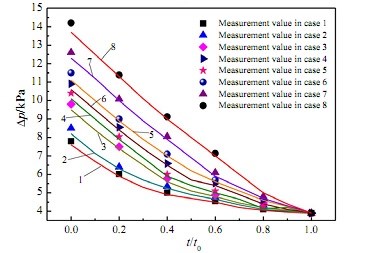Bài báo do nhóm tác giả: Jiaqiang E, Wei Zuo, Junxu Gao, Qingguo Peng, Zhiqing Zhang, Pham Minh Hieu – Trường Đại Học Hồ Nam, Trường Đại học công nghiệp Hà Nội. Bài báo được đăng tải trên tạp chí Energy Conversion and Management (IF:5.589) nhà xuất bản Elsever số 100 năm 2016(356-366)

Keywords: Diesel particulate filter (DPF), Continuous regeneration, NO2 assisted regeneration, Pressure drop characteristics
ABSTRACT
In order to enhance the dynamic performance, fuel economy and reduce particulate emissions for a diesel engine, the key is to reduce the pressure drop of continuous regeneration-diesel particulate filter (CR- DPF) based on NO2-assisted regeneration. In this work, firstly, a mathematic model based on NO2- assisted regeneration is developed. Then, the effects of the exhaust gas parameters and structural parameters of the CR-DPF on pressure drop in the NO2-assisted regeneration process are investigated and verified by experiments. Results show that the pressure drop is decreased under some conditions such as the moderate increase of the low exhaust flow rate, the reduction of the exhaust temperature, the reduc- tion of the NO2 concentration in the exhaust gas and the increase of the channel wall thickness, while the pressure drop is increased under other conditions such as the mass ratio m(NO2)/m(soot) between the NO2 and the soot being less than its threshold in exhaust gas, the increase of the filter length of the CR-DPF and the increase of the channel density when initial amount of the soot in filter is less than its threshold. Moreover, the O2 concentration in exhaust gas has no effect on the pressure drop. Finally, the proper ranges of some key parameters for reducing pressure drop of the CR-DPF have been provided.
Toàn văn bài báo: tải về tại đây
Thứ Hai, 20:10 07/05/2018
Copyright © 2018 Hanoi University of Industry.